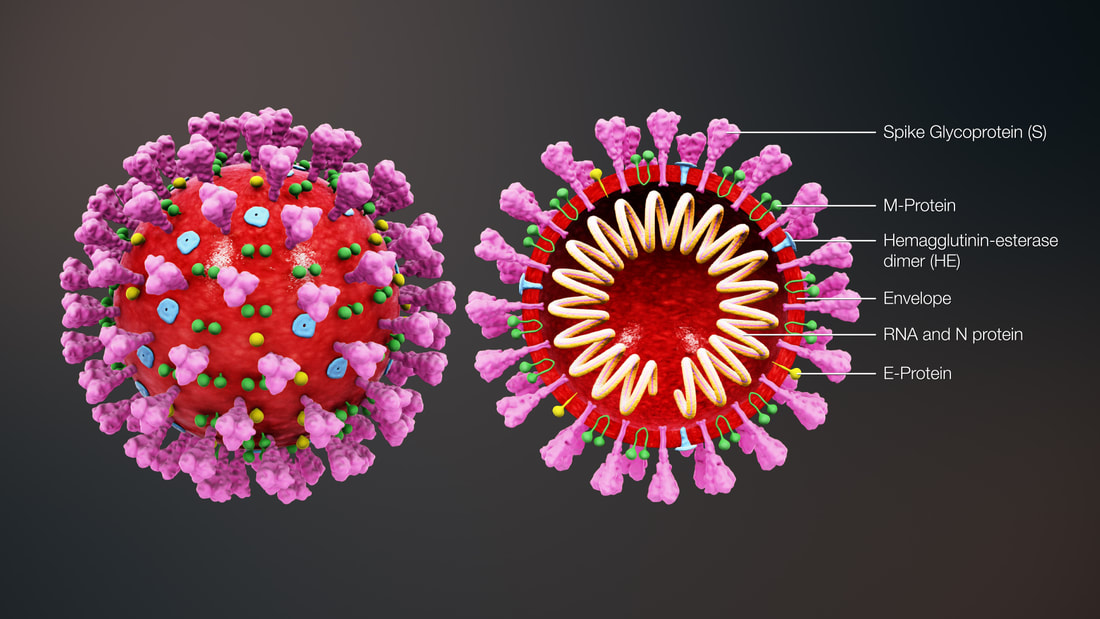|
By Elaine Zhu With the World Health Organization announcing a global pandemic and schools and large events being canceled across the world, coronavirus, or more formally known as “2019 novel coronavirus” and abbreviated as COVID-19, has been in the global spotlight since the beginning of 2020. COVID-19 is the result of one of a family of viruses called coronaviruses, which are common in various animal species, such as cattle, bats, or camels. Usually, coronaviruses from these species do not infect humans, but in special cases can be spread to humans and lead to a fatal disease. Scientists suspect that COVID-19 originated in a bat and then was transmitted to a pangolin before being spread to a human. This chain of transmission is usually quite rare, as it would need all three hosts to be in the same vicinity. The suspected source of the virus is a wet market in Wuhan, China, where different species of animals are sold for consumption, allowing for the opportunity of transmission to occur. After the initial transmission of COVID-19 to patient zero, the virus has spread to over one million people worldwide and has caused over 53,000 deaths as of April 2020. An individual usually contracts coronavirus through physical contact with an infected person; respiratory secretions emitting from the coughs or sneezes of an infected person; or coming into contact with the virus on a surface and then touching their eyes, nose, or mouth. After this occurs, the virus can enter the body and begin the process of infection. Generally, a virus is a capsule of genetic material surrounded by a protein shell called the capsid. Spike proteins line the outside of the capsid and then once they come into contact with a cell, bind to human cell receptors, allowing the virus to enter the cell and to hijack it. In COVID-19’s case, the virus binds to the angiotensin-converting enzyme 2 (ACE2) receptor to enter the cell and attacks the lungs, intestines, or spleen in victims. When the virus hijacks the human cell, it uses the cell’s inner mechanisms and the genetic material of the virus to start mass-producing replicas of the virus until it overtakes that cell and destroys it. More virus particles are released in the body and the virus goes on to continue to infect more cells exponentially. Once the human body detects that a virus has hijacked cells of the body, and triggers an immune response and sends immune cells towards the infection. This immune response triggers the symptoms that are characteristic of COVID-19 infection. Common symptoms include a sore throat, fever, and dry cough. In healthy individuals, the immune system will start to produce specific antibodies, which can identify and neutralize a foreign pathogen. However, COVID-19 cells can infect these immune cells and cause an overdrive in the immune system’s response. In severe cases or in people who are immunocompromised, neutrophils and killer T cells start to destroy both healthy and compromised cells, and soon even healthy tissue starts to get damaged, especially in the lungs. The epithelial cells of the lungs, which comprise its protective lining, can become extremely damaged, leaving the COVID-19 patients more susceptible to outside bacteria that can cause harmful complications or additional infections like pneumonia. With foreign, opportunistic bacteria taking advantage of the weakened and distracted immune system, the body slowly begins to be unable to fight off these bacteria, ultimately leading to organ failure or even death. To reiterate, the most severe cases of COVID-19 usually occur in the immunocompromised or in the elderly and not in healthy individuals with strong immune systems, though a bulk of the younger population is still at risk. Because a vaccine has yet to be approved for the public’s use, we all must take the appropriate measures to prevent the spread of COVID-19. The Centers for Disease Control and Prevention recommend that we all avoid close contact with people who are sick, stay home as much as possible, and keep a 6-foot distance from others, otherwise known as social distancing. They also recommend that we wash our hands often with soap and water for at least twenty seconds, or use a hand sanitizer that has at least 60% alcohol. In order to contain the spread of COVID-19, we must do all that we can to help the most susceptible members of society and to look out for each other.
0 Comments
Leave a Reply. |
Categories
All
Archives
April 2024
|

